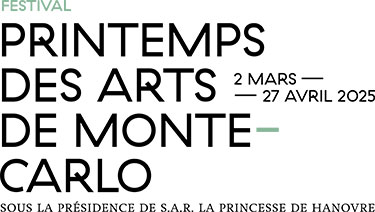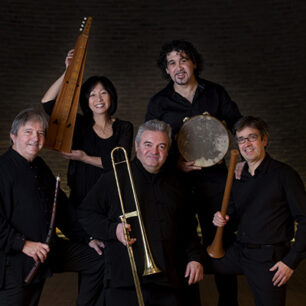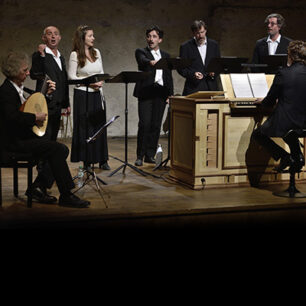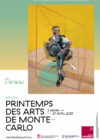It is quite astonishing that religious music of the Renaissance should have been so permeated with the theme of war, which is very much present in two guises. In the 15th century, the anonymous melody L’homme armé(The Armed Man) appeared in over forty masses, in the form of a clearly recognizable quotation (often placed in tenor); in the 16th century, it was the model for the famous polyphonic song La Bataille (or La Guerre) by Clément Janequin (1485-1558), whose motifs would thereafter reappear freely in the various counterpoint voices of numerous pieces. This concert proposes to mix the themes of war and death, by originally combining different religious repertoires that evoke them.
The French-Flemish Pierre de La Rue (c. 1460-1519) embodies the link between the two parts of the programme, as his Requiem (first part) precedes the sections of his Messe L’homme armé (second part). Like many of his compatriots, this major composer traveled extensively, notably as a musician in Maximilian’s Imperial Chapel, before settling at the court of Margaret of Austria, a princess with a sad destiny, for whom he composed several songs expressing her melancholy. Alternately betrothed and repudiated, then twice prematurely widowed, Maximilian’s daughter died without posterity after having a mausoleum church built in Brou in memory of her last husband, a masterpiece of late Gothic art whose marble gisants still impress.
We don’t know the identity of the deceased for whom Pierre de La Rue wrote the polyphony of the Missa pro fidelibus defunctis for four and five voices, based on liturgical chants appropriate to the occasion, quoted by the tenor and/or superius part. But the outstanding feature of this Requiem is its exceptionally dark colour, befitting the grave atmosphere of the funeral. The particularly deep bass voices required here correspond well to certain descriptions of the period, which also mention the tempo appropriate to the church in general, and even slower at funeral ceremonies.
The succession of pieces that make up the liturgy of the Mass of the Dead is respected in this programme, but Dominique Visse has taken the liberty of inserting a few parts taken from other Requiems composed by contemporaries: the French-Flemish Jean Richafort and the French Antoine de Févin. It makes for greater diversity in writing, in the number of voices (from two to eight), and also in distribution, since the free association of voices and instruments – here, the cornett, shawm, sackbut and dulcian – allows us to hear the full palette of colours that characterises Renaissance music.
The successes of L’homme armé and La Bataille each have their own historical roots: the first is a melody which, in addition to its simple, easy-to-remember profile and musical versatility, is undoubtedly linked to the crusading spirit aroused by the capture of Constantinople in 1454. The second was originally a particularly lively, descriptive polyphonic song, often associated with François I and the celebration of his victory at Marignan (1515), but which was probably circulated a decade or so later, to make people forget the king’s defeat at Pavia (1525), which shortly preceded the first Parisian musical prints.
This exceptionally well-crafted song, peppered with onomatopoeia, struck a chord throughout Europe and spawned numerous imitations and vocal and instrumental arrangements; the very genre of mass, accustomed in the 16th century to relying on preexisting vocal models (a genre now known as “messe-parodie”), did not escape this vogue. Clément Janequin himself composed a Messe La Bataille based on his own song, thus participating in the paradoxical practice of introducing the underlying presence of war references into a song of peace. Were these melodic motifs clothed in the Latin texts of the mass recognised by all listeners? In any case, the anecdote recounted by Noël Du Fail in 1548 seems to indicate the song’s wide dissemination in society, and its powerful bellicose effect: “Quand on chantoit la chanson de la guerre faite par Jannequin devant ce grand François, pour la victoire qu’il avoit euë sur les Suisses, il y aoit celuy qui ne regardast si son espee tenoit au fourreau, et qui ne se haussast sur les orteils pour se rendre plus bragard et de la riche taille.” (When we sang the song of war made by Jannequin in front of the great François for his victory over the Swiss, there wasn’t one who wouldn’t check if his sword held to its sheath or stand on tiptoe to look braggier and taller.)
Through various masses on these two themes, this programme presents a sort of recomposed but coherent mass, offering a brilliant musical journey through space and time, from the 15th to the early 17th century, from Flanders to France, via Italy and Spain.
Isabelle His




